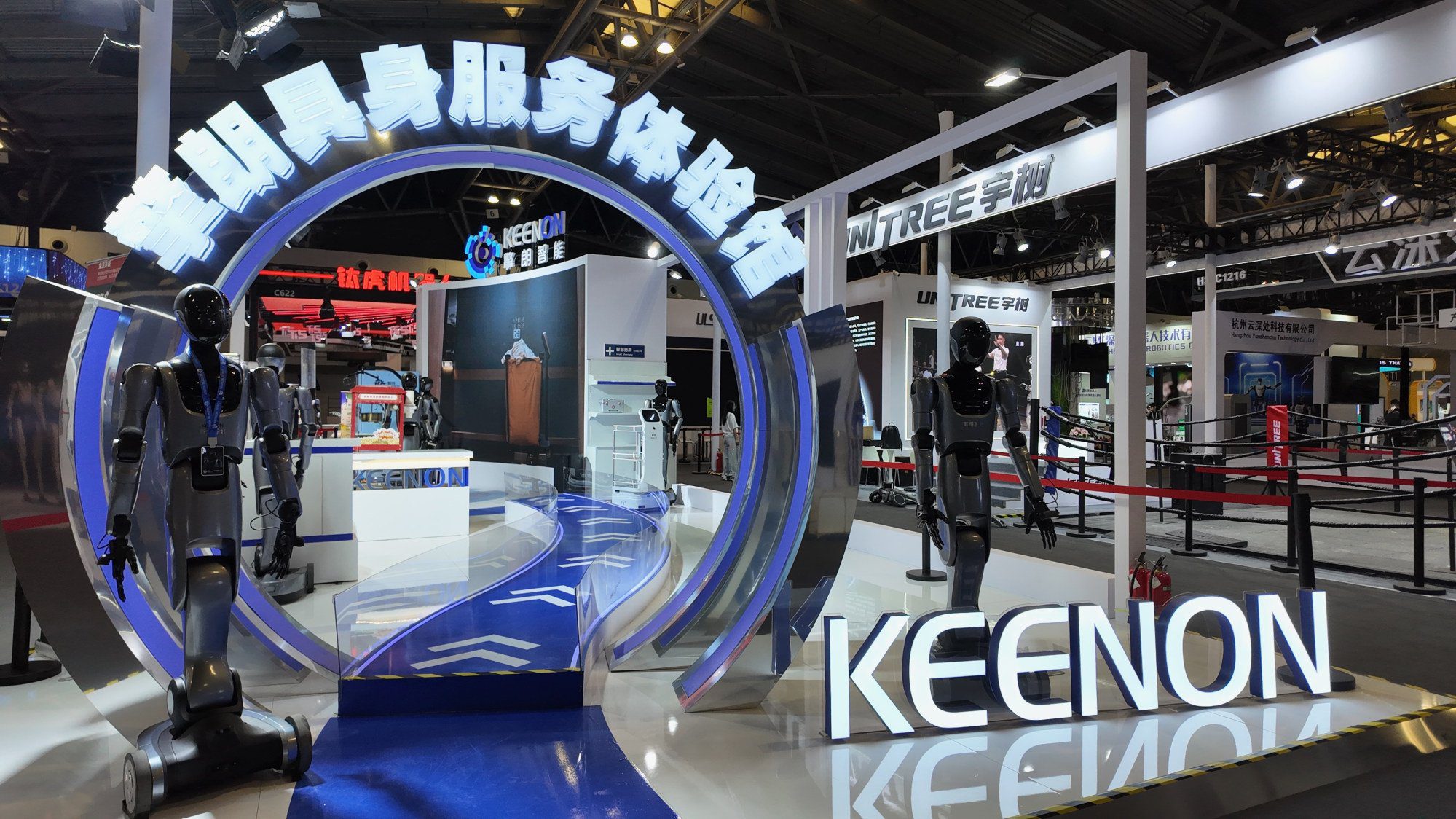Strategic Approach to Humanoid Robotics
Shanghai-based Keenon Robotics has taken a pragmatic approach to the development and deployment of humanoid robots. Instead of aiming for an all-purpose robot, the company focuses on identifying simple, repetitive tasks that can be managed by current humanoid technology. This strategy reflects a broader industry trend, where the integration of humanoid robots into real-world applications is expected to be gradual.
Founded in 2010, Keenon has established itself as a leading commercial service robot manufacturer, with a global shipment market share of nearly 23% last year, according to IDC. The company has sold over 100,000 robot units worldwide, and sales are projected to grow by 50% this year. While its existing robots excel at tasks such as delivering items, cleaning, and disinfecting, Keenon’s challenge lies in finding practical applications for humanoids.
At the World Artificial Intelligence Conference in Shanghai, Keenon showcased two new bipedal models called XMAN-F1. These robots demonstrated their ability to scoop and offer popcorn to visitors, while another model at the company’s booth was ready to serve freshly poured cocktails. According to Keenon founder and CEO Li Tong, the company does not aim to create an all-purpose robot at this stage. Instead, the focus is on deploying humanoid robots gradually, starting with single tasks and progressing to multiple tasks.
Li emphasized that the immediate goal is to identify simple tasks for the company’s robots, drawing inspiration from Tesla’s Optimus serving popcorn at its Supercharger station in Los Angeles. Generalization, he added, is a long-term endeavor. Keenon is currently conducting proof-of-concept tests with clients, aiming to integrate its humanoids into real-world scenarios such as hospitality and deliveries.
This approach also addresses the challenge of insufficient physical-world data for robot training. At its headquarters in Shanghai’s Pudong district, a compact showroom displays various models, from restaurant robots with trays attached to their bodies to delivery bots whose bowels serve as storage space. Others specialize in hospital disinfection, medical waste transport, and automated sweeping. The machines are seen being fine-tuned as they navigate ramps and narrow paths.
Robots have become a common sight across China, particularly in hotels where they deliver food directly to guest rooms. Li acknowledged that these robots still lack sufficient intelligence but noted recent advancements in large language models have opened new possibilities for robots. With artificial intelligence, robots “now have something like a brain,” he said.
Keenon initiated a new robotics project in 2023, formally committing to the humanoid format in 2024, and launched its first wheeled humanoid robot in March this year. Li highlighted the company’s advantages, including years of accumulated environmental data and manufacturing expertise in electromechanical systems and streamlined production processes.
The humanoid robotics sector, often referred to as embodied intelligence, is gaining momentum this year. In China, performances by Unitree Robotics’ dancing robots at state broadcaster China Central Television’s New Year’s Eve gala went viral, and their appearances at sports events and tech expos consistently drew attention. Government policies and market investments have further accelerated growth in the sector.
A recent UBS report forecast that the global humanoid robot population could exceed 300 million by 2050, with annual demand projected to reach 86 million units. The market value for the industry could range between US$1.4 trillion and US$1.7 trillion, the bank said, although analysts advised caution in the near term.
Li said the current hype in the robotics industry is an inevitable by-product of rapid tech innovation, but he also believed that the sector in China had significant advantages in engineering-talent density and manufacturing capabilities. Keenon has raised seven funding rounds totaling hundreds of millions of dollars. Notable investors include the SoftBank Vision Fund, Alibaba Group Holding’s food delivery app Ele.me, Source Code Capital, Yunqi Partners, and Shanghai’s state-backed Sci-Tech Innovation Fund, according to corporate data tracker Tianyancha.
Alibaba owns the Post. Keenon said it was actively exploring opportunities for a potential public listing. Compared to more ambitious rivals, Keenon’s goals are pragmatic: it aims to sell products that effectively solve customer problems. Pricing for its humanoid robots, like its other offerings, aligns with local labor costs.
Many clients entered lease agreements – what Li referred to as “labor contracts” – with monthly payments typically less than half the cost of hiring local workers, the company said. This makes Keenon’s solutions particularly appealing in high-income or aging markets. “In a way, we are a labour outsourcing company,” Li said.










